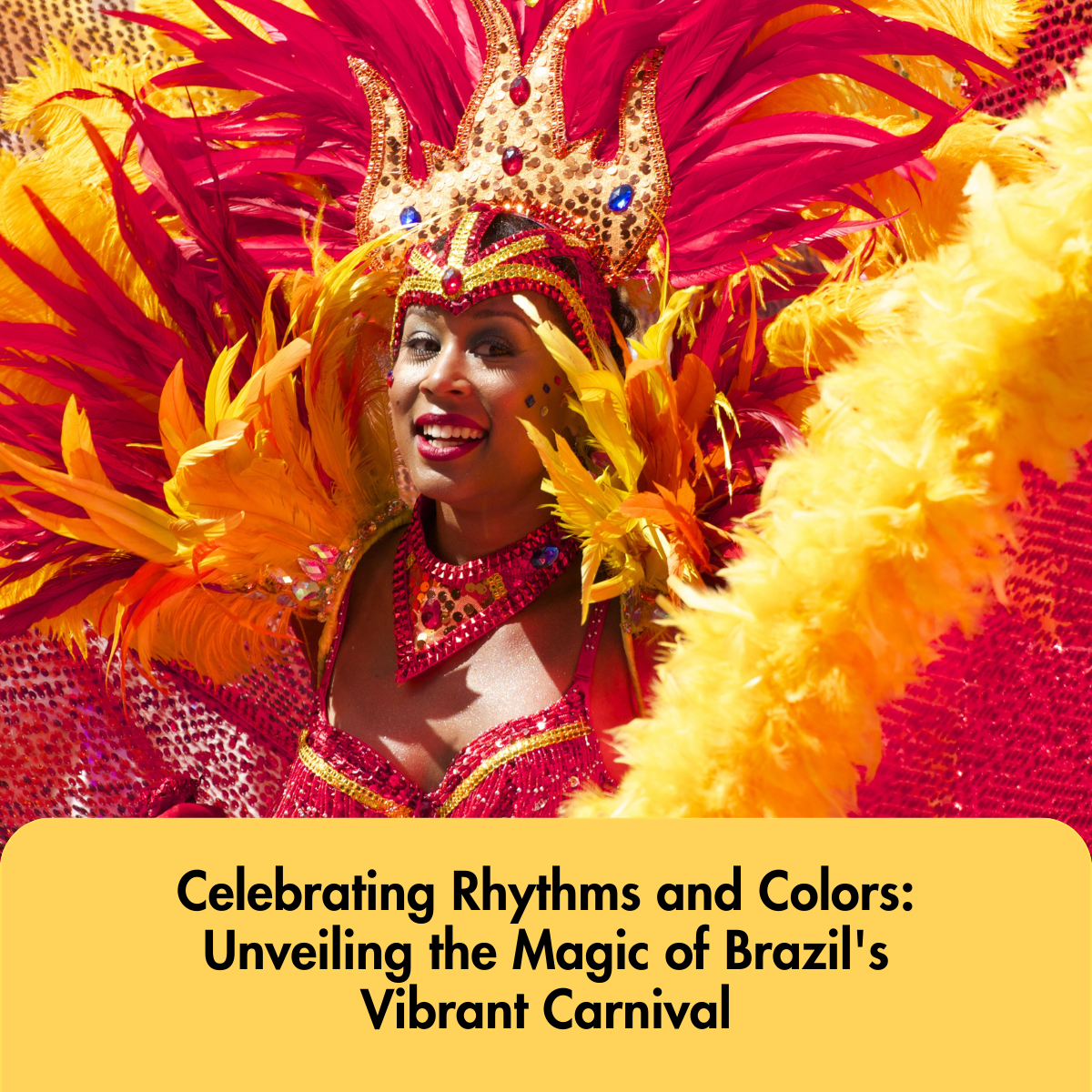Brazil's Carnival, the world's largest and most exuberant celebration, is a dazzling spectacle that captivates the hearts of millions. This annual extravaganza is a cultural phenomenon that goes beyond just a party – it's a vibrant tapestry woven with music, dance, and a kaleidoscope of colors that brings the entire nation together. Join us on a journey as we unveil the enchanting magic of Brazil's Carnival.
The Origins
Rooted in a blend of African, Portuguese, and indigenous traditions, Brazil's Carnival has a rich history dating back to the 18th century. Originally a period of feasting before the Catholic season of Lent, it has evolved into a dynamic and diverse celebration that showcases the country's cultural mosaic.
Samba, the Heartbeat of Carnival
At the core of Carnival is the infectious rhythm of samba. This Afro-Brazilian musical genre and dance form encapsulate the spirit of the festival. Elaborate samba parades featuring dazzling costumes, elaborate floats, and passionate dancers take to the streets, creating an electrifying atmosphere that is simply unmatched.
The Sambadrome: A Theater of Dreams
One of the epicenters of Carnival is the iconic Sambadrome, a purpose-built parade ground in Rio de Janeiro. Here, samba schools compete fiercely, pouring their hearts and souls into meticulously planned performances. The Sambadrome transforms into a theater of dreams, where creativity knows no bounds, and the energy is palpable.
Costumes and Colors
Carnival is a visual feast with participants donning elaborate costumes that range from traditional to avant-garde. The vibrant colors, feathers, and sequins create a dazzling display that symbolizes the spirit of freedom and creativity. Each costume is a work of art, reflecting the individuality and collective energy of the participants.
Street Parties (Blocos) and Neighborhood Celebrations
Beyond the grandeur of the Sambadrome, the streets come alive with spontaneous celebrations known as "blocos". These street parties feature live music, dance, and a lively, inclusive atmosphere that invites locals and tourists alike to join in the festivities. Neighborhoods across Brazil host their own unique celebrations, adding a personal touch to the nationwide revelry.
Language Fact
A captivating language fact related to Carnival is the influence of African languages on Brazilian Portuguese. The rhythmic and percussive qualities of African languages have left an indelible mark on the Portuguese spoken in Brazil, particularly in the context of music and dance. The vibrant linguistic fusion enhances the lyrical beauty of samba songs and adds an extra layer of cultural richness to the Carnival experience.
The term "carnival" is believed to have originated from the Latin phrase "carnelevare," which means "to remove meat." The name reflects the historical practice of abstaining from meat consumption during the Lenten season leading up to Easter in the Christian calendar. Lent is a period of fasting, reflection, and penance, and traditionally, meat was considered a luxury that people gave up during this time.
Brazil's Carnival is a celebration that transcends boundaries, embodying the essence of diversity and unity. At BeatBabel, we share a similar commitment, specializing in translation and cultural adaptation. Just as Carnival unites people through music and dance, our services bridge linguistic gaps, ensuring that your message resonates across cultures. Embrace the vibrant spirit of Carnival, and let BeatBabel be your partner in navigating the global tapestry of communication.

